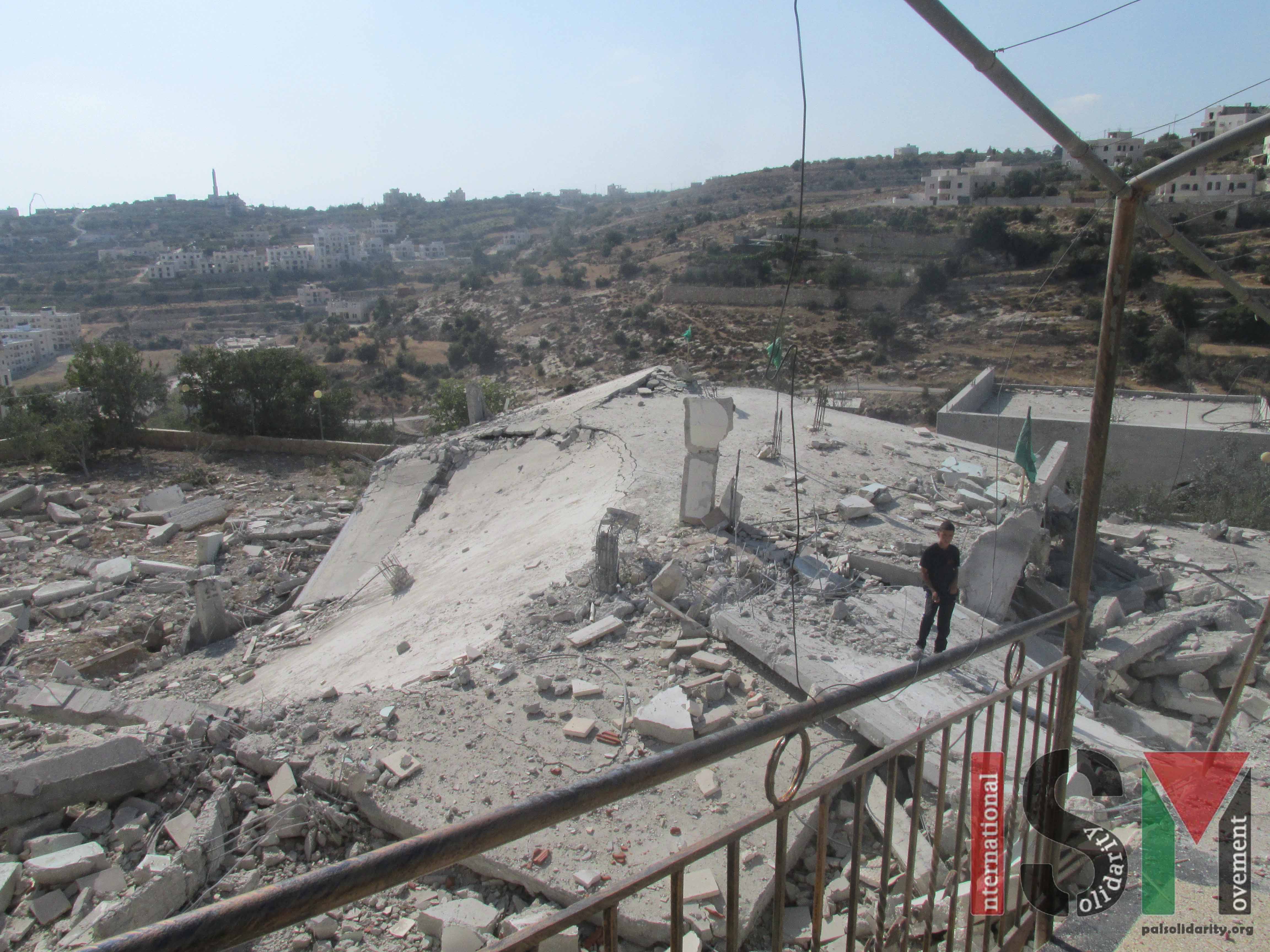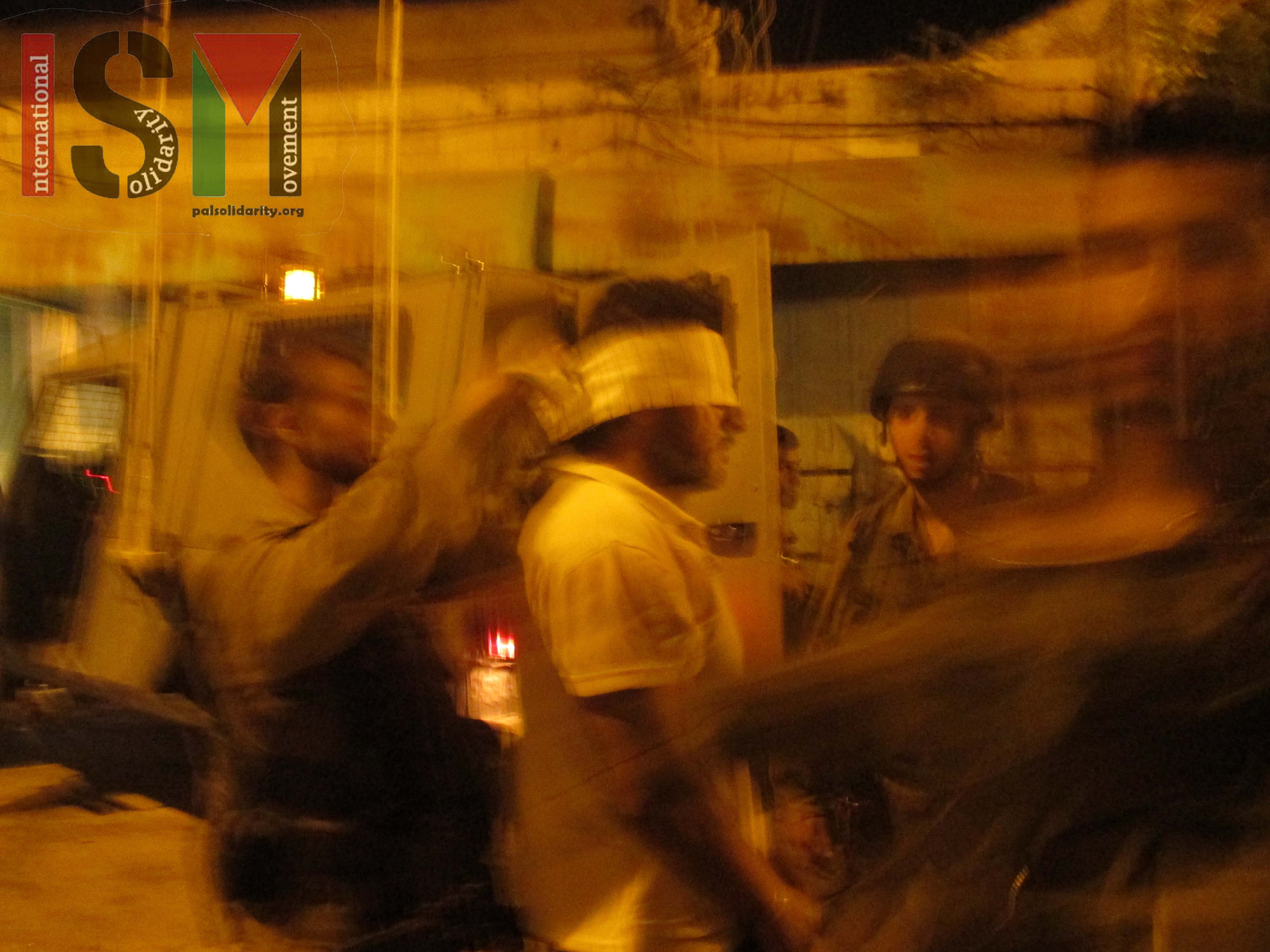Category: Reports
-
Three homes destroyed in Hebron
19th August 2014 | International Solidarity Movement, Khalil team | Hebron, Occupied Palestine Yesterday, the Israeli army demolished the homes of three Palestinian families in al-Khalil (Hebron). At around 11pm on August 17th, a large Israeli military presence began to accumulate in the area of Daersat Alser where the homes of Abu Eisha and Marwan…
-
Palestinian arrested after filming settlers throwing stones
17th August 2014 | International Solidarity Movement | Occupied Palestine Yesterday at approximately 5:30 PM in the old city in al-Khalil (Hebron) settlers from the illegal settlement of Beit Hadassah threw rocks and water at Palestinians living on Shalala Street. This is a regular occurance for Palestinian families living close to illegal settlements in al-Khalil. The majority…
-
Video: Israeli soldiers celebrate shooting an 18-year-old
12th August 2014 | International Solidarity Movement | Hebron, Occupied Palestine On August 9th in Hebron, Israeli soldiers celebrated shooting an 18-year-old Palestinian youth in the leg with live ammunition. The Canadian volunteer, Vern, who witnessed the soldier firing, stated, “After the soldiers left the roof, I went to confront them about why they had fired. One…



